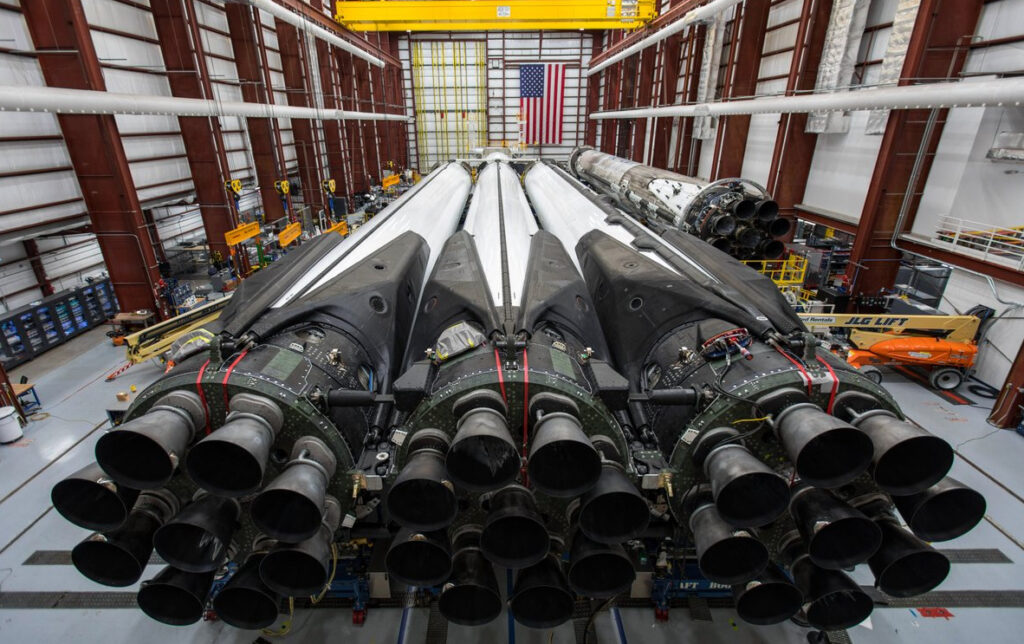
GOES-U (19) Countdown to Launch
GOES-U is the 4th and Last of the GOES-R Series

UPDATE: 4-24-2023
High demand for space weather data is prompting the National Oceanic and Atmospheric Administration to consider revising the schedule for its geostationary weather satellite fleet.
NOAA officials are discussing the possibility of moving the final satellite in the Geostationary Operational Environmental Satellite-R series, GOES-U, into operations soon after it launches to provide imagery and data from the Compact Coronagraph.
“Nothing has been decided yet, but the main motivation for putting GOES-U into operation is the Compact Chronograph, a new space weather instrument we’ll be carrying,” said Pam Sullivan. “Folks are anxious to have that data.”
If NOAA decides not to make any changes, GOES-U would not move into service immediately because NOAA would continue to rely on GOES-T, the current GOES-West satellite launched in 2022, and GOES-R, the current GOES-East launched in 2016.
The Compact Coronagraph is designed to provide imagery of the solar corona in addition to detecting and characterizing coronal mass ejections.
GOES-U is a planned weather satellite, the fourth and last of the GOES-R series of satellites operated by the National Oceanic and Atmospheric Administration (NOAA). The GOES-R series will extend the availability of the Geostationary Operational Environmental Satellite (GOES) system until 2036. The satellite will be built by Lockheed Martin, based on the A2100 platform.
Launch

United Launch Alliance declined to bid on the launch of the GOES-U weather satellite last year even though it won contracts for its three predecessors, GOES-R, -S, and -T, because of a lack of available vehicles; GOES-U will instead launch on a SpaceX Falcon Heavy rocket no earlier than 30 April 2024 from Kennedy Space Center, Florida, United States. The redesign of the loop heat pipe to prevent an anomaly, as seen in GOES-17, is not expected to delay the launch as it did with GOES-T. The satellite launch, is estimated to cost approximately $152.5 million.
It will have a mass of 2,800 kg (6,200 lb)

The Solar Ultraviolet Imager (SUVI), gives the GOES-R satellites the ability to observe the sun’s solar flares and solar eruptions, which can provide early warning of possible impacts to Earth’s space environment and enable better forecasting of potentially disruptive events on the ground. SUVI’s electronics box and telescope installation are seen here on GOES-U.

The fourth satellite in NOAA’s GOES-R Series, GOES-U, recently had a new instrument installed. Called a Compact Coronagraph, this is a copy of the Naval Research Laboratory‘s Compact CORonagraph (CCOR) instrument which, along with the CCOR planned for Space Weather Follow On-Lagrange 1 (SWFO-L1), which will allow continuous monitoring of solar wind after the retirement of the NASA-ESA SOHO satellite in 2025. This will be the first time it has been installed on any GOES spacecraft.



Post Launch

GOES-U is currently slated to be an ‘On-Orbit’ Backup for GOES East or West, in much the same way that Himawari 9, which is patiently waiting in space,on-orbit since 11 November 2016, will replace Himawari 8 in December 2022. Himawari 9 will become primary and Himawari 8 will be placed into on-orbit storage.
What is going to replace the GOES-R series?

NOAA’s Geostationary Extended Observations (GeoXO) satellite system will expand observations of Earth that the GOES-R Series currently provides from geostationary orbit. The information GeoXO supplies will address emerging environmental issues and challenges regarding weather, the ocean, and the climate that threaten the security and well-being of everyone in the Western Hemisphere.
NOAA expects that GeoXO will begin operating in the early 2030s as the GOES-R Series nears the end of its operational lifetime.
